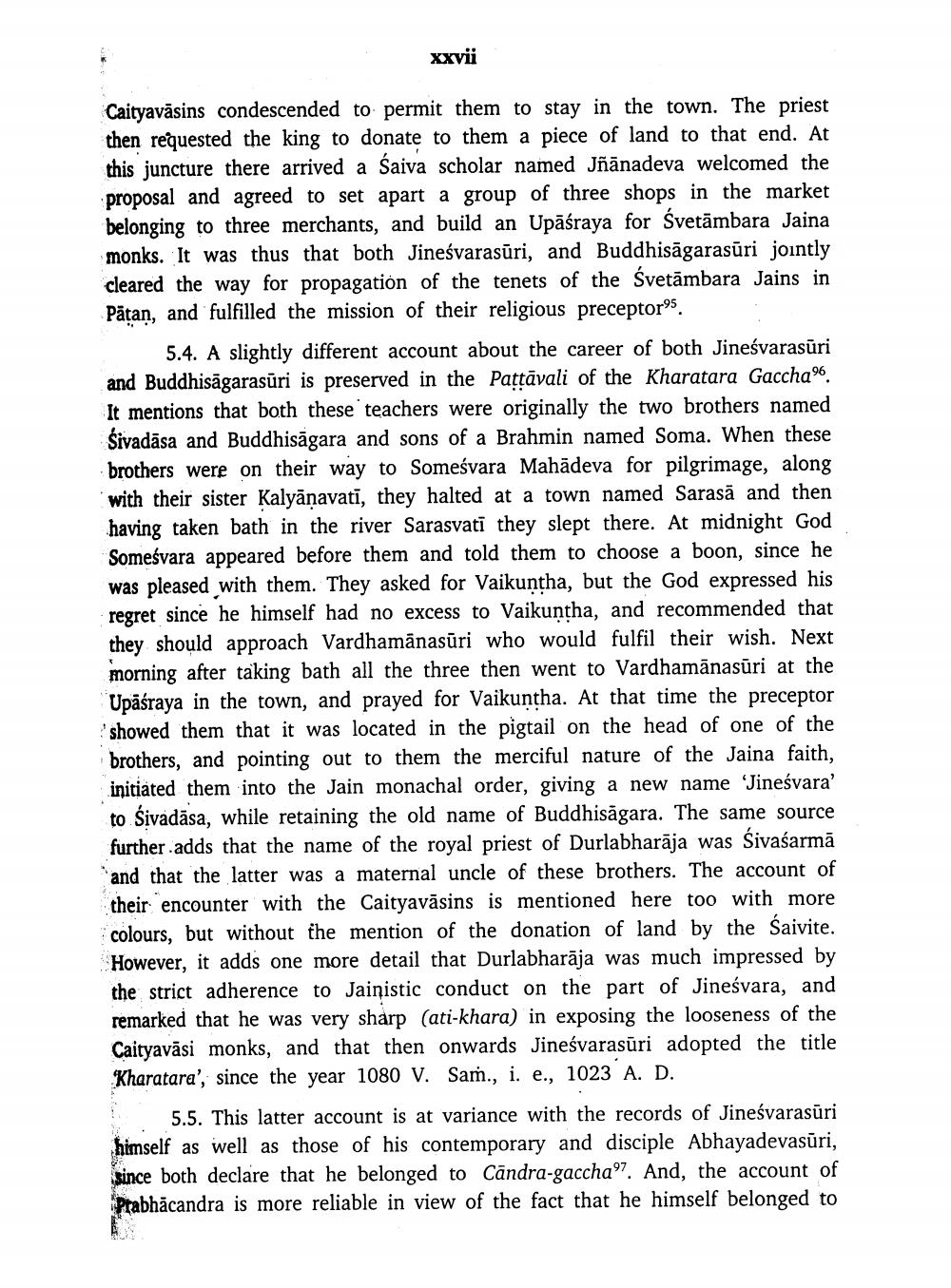________________ xxvu Caityavasins condescended to permit them to stay in the town. The priest then requested the king to donate to them a piece of land to that end. At this juncture there arrived a saiva scholar named Jnanadeva welcomed the proposal and agreed to set apart a group of three shops in the market belonging to three merchants, and build an Upasraya for Svetambara Jaina monks. It was thus that both Jinesvarasuri, and Buddhisagarasuri jointly cleared the way for propagation of the tenets of the svetambara Jains in Patan, and fulfilled the mission of their religious preceptoro. 5.4. A slightly different account about the career of both Jinesvarasuri and Buddhisagarasuri is preserved in the Pattavali of the Kharatara Gaccha%. It mentions that both these teachers were originally the two brothers named Sivadasa and Buddhisagara and sons of a Brahmin named Soma. When these brothers were on their way to Somesvara Mahadeva for pilgrimage, along with their sister Kalyanavati, they halted at a town named Sarasa and then having taken bath in the river Sarasvati they slept there. At midnight God Somesvara appeared before them and told them to choose a boon, since he was pleased with them. They asked for Vaikuntha, but the God expressed his regret since he himself had no excess to Vaikuntha, and recommended that they should approach Vardhamanasuri who would fulfil their wish. Next morning after taking bath all the three then went to Vardhamanasuri at the Upasraya in the town, and prayed for Vaikuntha. At that time the preceptor showed them that it was located in the pigtail on the head of one of the brothers, and pointing out to them the merciful nature of the Jaina faith, initiated them into the Jain monachal order, giving a new name 'Jinesvara' to Sivadasa, while retaining the old name of Buddhisagara. The same source further adds that the name of the royal priest of Durlabharaja was Sivasarma and that the latter was a maternal uncle of these brothers. The account of their encounter with the Caityavasins is mentioned here too with more colours, but without the mention of the donation of land by the Saivite. However, it adds one more detail that Durlabharaja was much impressed by the strict adherence to Jainistic conduct on the part of Jinesvara, and remarked that he was very sharp (ati-khara) in exposing the looseness of the Caityavasi monks, and that then onwards Jinesvarasuri adopted the title Kharatara', since the year 1080 V. Sam., i. e., 1023 A. D. 5.5. This latter account is at variance with the records of Jinesvarasuri himself as well as those of his contemporary and disciple Abhayadevasuri, since both declare that he belonged to Candra-gacchao7. And, the account of Prabhacandra is more reliable in view of the fact that he himself belonged to




